Love fire-roasted tomatoes? Try making them at home by broiling the tomatoes in the oven! Freeze and use all winter long.
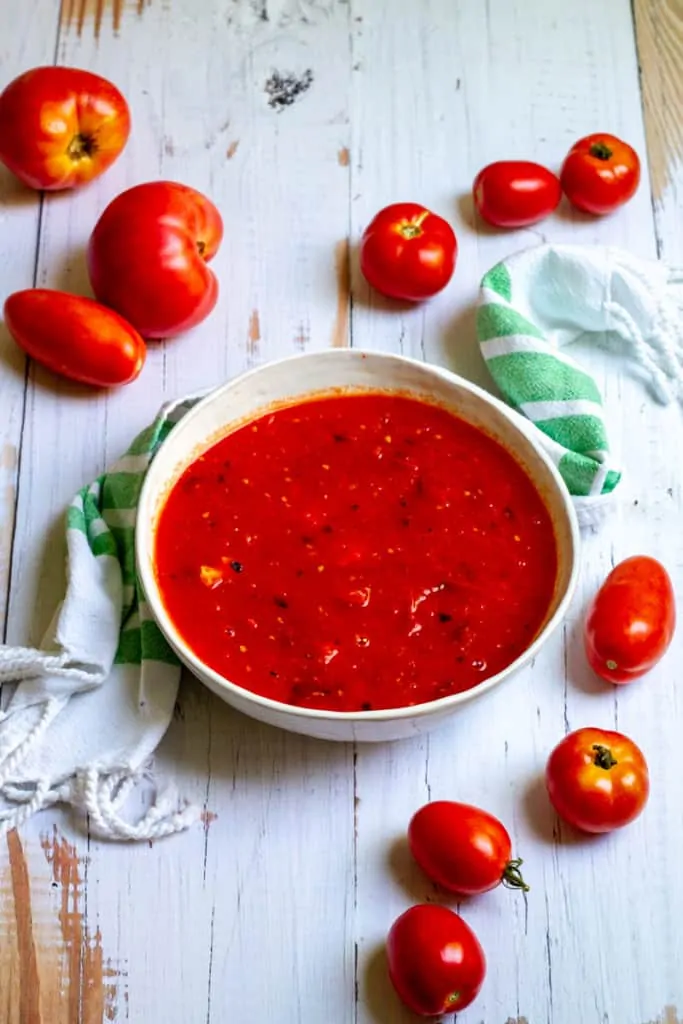
Peak tomato season makes me so happy.
Few things in life are better than a sliced fresh tomato with a little salt and pepper.
I've also been using tomatoes to make ratatouille, tomato corn salad, and tomato tarts.
At some point, though, there are simply more tomatoes than you can use before they go bad. I won't say "too many tomatoes" because that's clearly not a thing.
What can be done?
Clearly, the tomatoes need to be preserved for later.
I've been making tomatoes provençal (baked tomatoes), San Marzano marinara sauce, and yellow tomato marinara, and then freezing everything for winter.
Last night, I made a batch of slow-roasted cherry tomatoes, packed them in oil, and stored them in the fridge. My next batch of slow-roasted tomatoes will go in the freezer.
And of course, I've been making (and freezing) fire-roasted tomatoes.
If you follow along with my Instagram stories, you've probably been watching me prep and freeze tomatoes.
What is Fire-Roasting?
Strictly speaking, fire-roasting is cooking with fire.
For these fire-roasted tomatoes, we're using the same technique I use for fire-roasted salsa (and mango habanero salsa).
The oven broiler.
If you're using a gas oven, you will actually be cooking the tomatoes with a gas flame. If you're using an electric oven, we'll say it's close enough.
What Kind of Tomatoes Can I Use?
Use any type of juicy tomato (slicing tomatoes) or paste tomato (such as Roma).
Juicy tomatoes will make a juicy final product, and paste tomatoes will make a thicker sauce.
Use whichever tomato you have on hand.
How to Fire-Roast Tomatoes
Core the tomatoes and slice them in half horizonally.
Place the tomatoes cut-side down in an oven-safe pan. I used this Lodge 12" carbon steel skillet.
If you're using paste tomatoes, you could use a baking sheet instead. Avoid using a baking sheet with juicy tomatoes, because the juice could overflow into the oven.
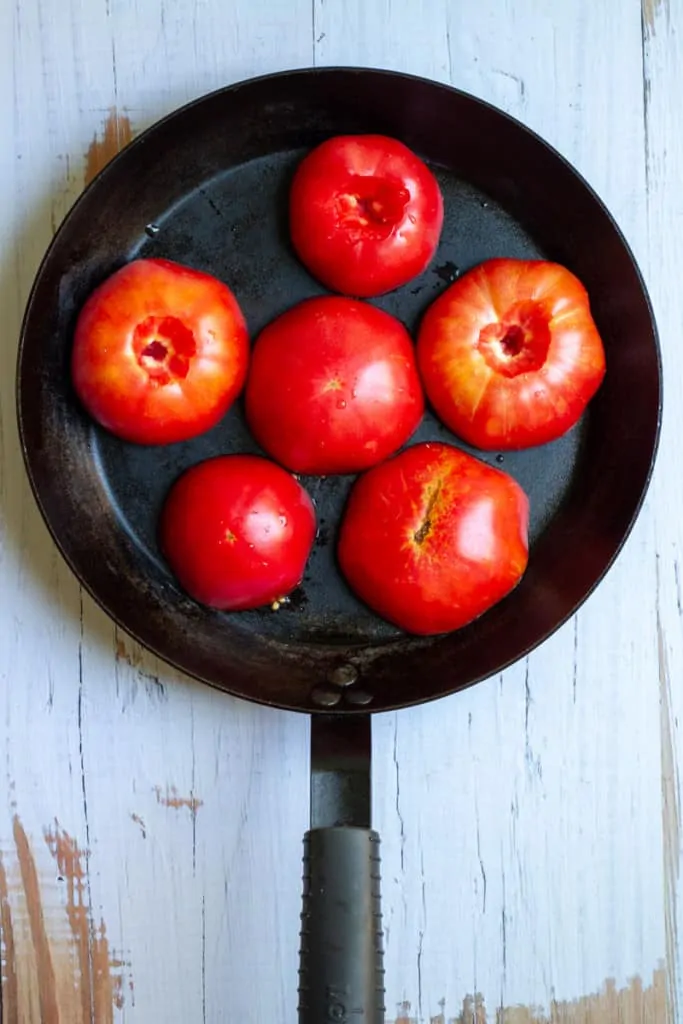
Slide the tomatoes into the oven, and roast until the skins are charred.
The larger and juicier the tomatoes are, the longer they'll take to char.
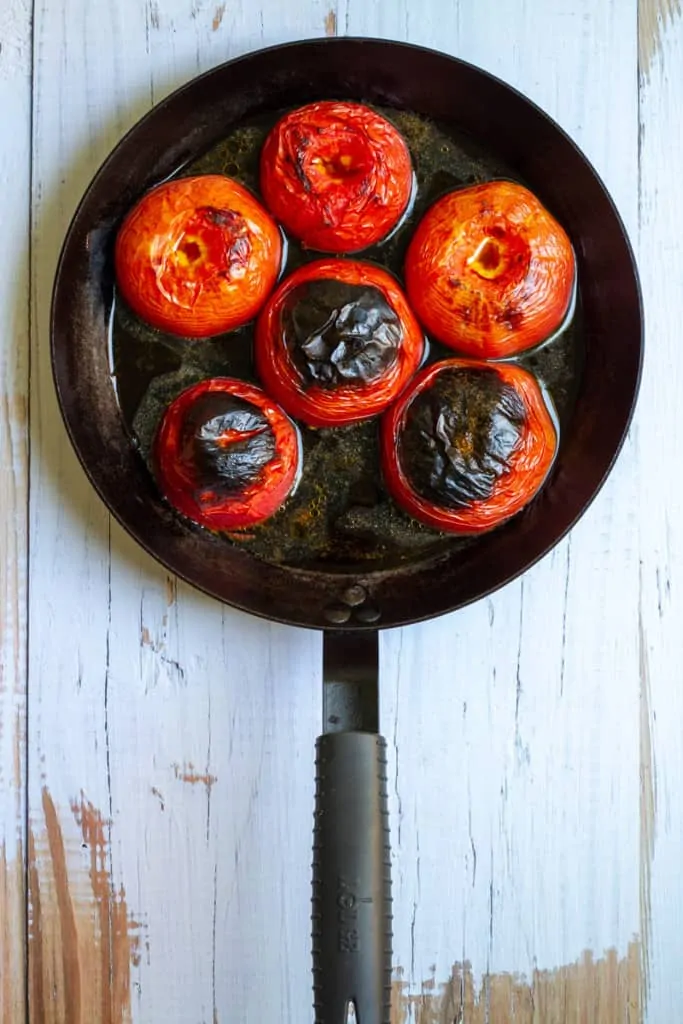
Next, add the tomatoes (and their juices) to the basin of a food processor (like this KitchenAid 5-cup food processor).
Use the chop function to dice the tomatoes.
If you want a smoother tomato blend, continue pulsing until the tomatoes are more finely chopped.
Roughly chopping will make your tomatoes a similar consistency to store-bought canned diced tomatoes, and finely chopping will more closely resemble crushed tomatoes.
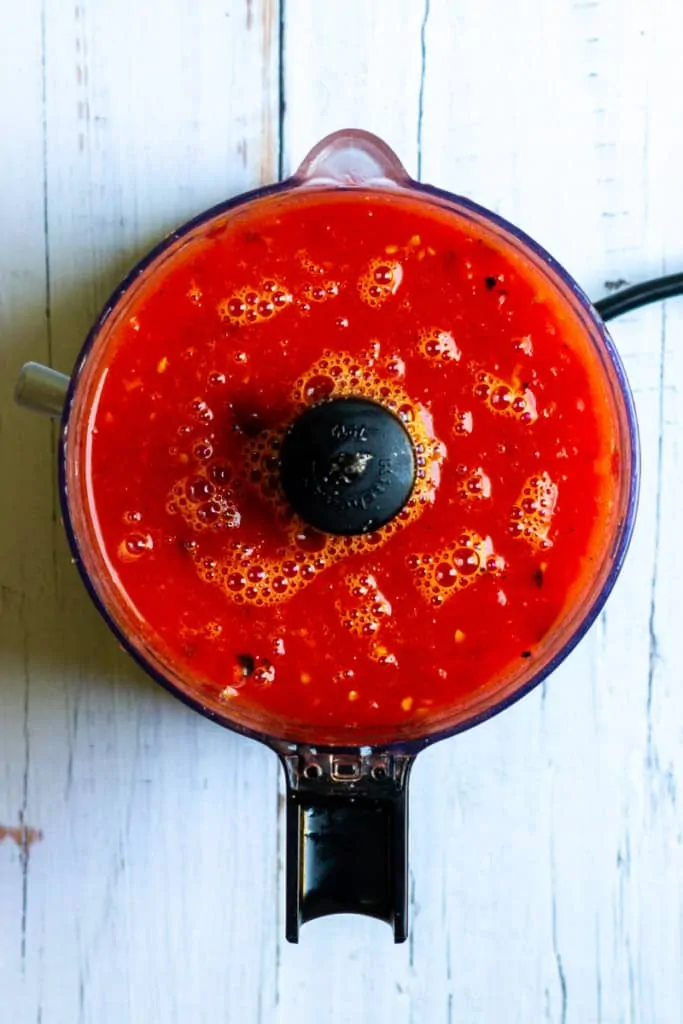
At this point, you can either use the tomatoes immediately, refrigerate and use within a few days, or freeze them for longer storage.
Can I Use These As a Replacement for Canned Tomatoes?
Yes, absolutely!
These tomatoes are an awesome replacement for store-bought canned fire-roasted tomatoes.
I like to freeze my tomatoes in 14-ounce portions, the same size as a standard (small) can of tomatoes.
How to Use Fire-Roasted Tomatoes
Some recipes specifically call for fire-roasted tomatoes.
For instance, I use fire-roasted tomatoes in this red lentil dal (and Instant Pot dal), palak paneer, and vegan split pea soup.
These tomatoes are also delicious in any recipe that would benefit from a smoky flavor, like in this tortilla soup or beer chili. Simply swap the tomatoes in the recipe for the same amount of fire-roasted tomatoes.
Prepare and freeze your tomatoes now and enjoy them all year long!
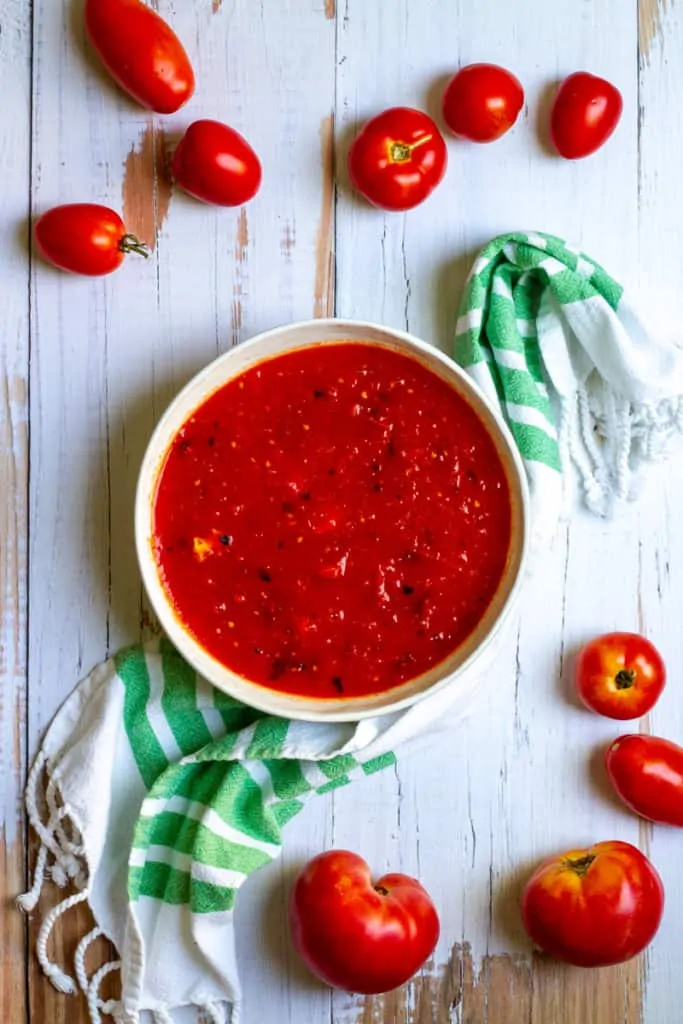
Fire-Roasted Tomatoes
Ingredients
- 1 ½ pounds tomatoes, cored + halved See Recipe Notes
- 1 tablespoon avocado oil Or use another high-smoke point oil, such as canola
- ¼ teaspoon sea salt (or more to taste)
Instructions
- Move an oven tray about 3 to 4 inches from the broiler. Preheat the broiler to high.Place tomatoes cut-side down in a single layer on an oven-safe pan or baking sheet. If using very large and juicy tomatoes, I recommend opting for a rimmed pan to prevent the juices from spilling into the oven.Drizzle oil over the veggies.

- Broil tomatoes 5-15 minutes, or until they begin to blacken and char. Juicy tomatoes will take longer to broil than Roma tomatoes. (The broil time will vary depending on your oven's broiler. Gas broilers tend to cook more quickly.)When the tomatoes are charred, remove them from the oven.
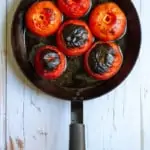
- Add the charred tomatoes (and their juices) and salt to a food processor basin, and use the chop setting until the tomatoes are chopped and mixed together. (How finely you chop them is up to you.) If your food processor basin is too small, it's fine to work in batches and transfer the tomatoes to a large bowl as you work.If you don't own a food processor, you can use a blender instead. If using a blender, take care to simply blitz the tomatoes a few times, and avoid puréeing the tomatoes into soup. (Unless, of course, you're trying to make soup.)Refrigerate and use tomatoes within 4-6 days, or freeze and use within a year. (I like to portion mine into 14oz servings and freeze, so that each portion is the same as one 14oz can.)


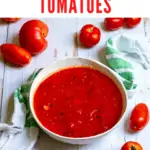
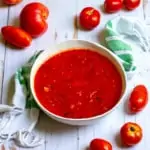
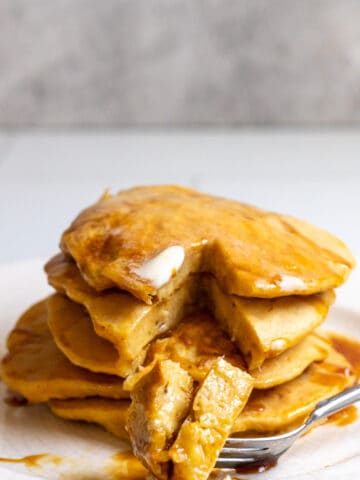
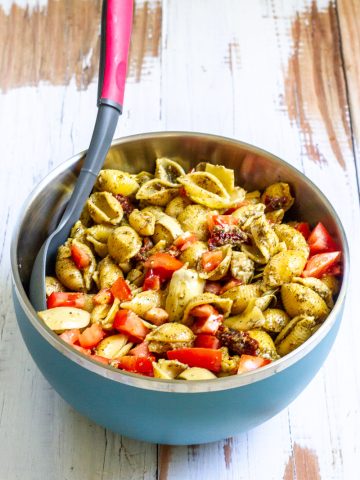

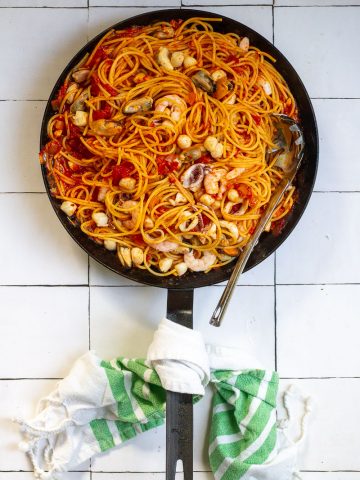
Annie
I haven't tried this but want to and most likely will. I have 2 questions; could you do this on a pellet grill that has very precise temperature? Also, is there any reason these couldn't be canned with some herbs and seasonings added? I use a pressure canner, not a water bath. Thank you for any help.
Sarah Trenalone
Hi Annie!
1- I haven’t personally tried it on a pellet grill (we use a charcoal grill), but as long as you got it hot enough to char the skin it should be fine! For grilling I would probably leave the tomatoes whole instead of halving.
2- I have not tested this for canning. I know with water bath canning you don’t use the tomato skins, and I’m not sure about using them with pressure canning. You could discard the skins but you’ll lose some of the char flavor. I freeze these to preserve 🙂